Fashionable by Design
By Maxine Carter-Lome
When you think of luxury brands that have stood the test of time by staying true to its craftsman roots, Hermès is one that comes to mind. From its harnesses and saddles to the iconic Birkin bag (named for Actress Jane Birkin) and scarves that surround you in luxurious hand-stitched silk, Hermès continues to attract the most discerning owners and collectors.
Thierry Hermès (1801–1878) was born in Germany but moved with his family to France in 1828. He established Hermès in 1837 on the Grands Boulevards quarter of Paris where he created leather harnesses and bridles for the carriages of European noblemen. Members of the Parisian beau monde and European nobility, including Napoléon III and Empress Eugénie, were among his clientele.
Thierry’s son, Charles-Emile Hermés, expanded the line of fine equestrian tack when the maker relocated near the Palais de l’Elysee in 1879 and established themselves as purveyors of finely crafted harnesses, saddles, whips, bridles, boots, and other fine leather equestrian equipment, along with creating a line of leather bags to house and protect these goods.
One hundred and eighty years later, Hermès remains a majority-owned family business (now in its sixth generation), with publicly declared assets of $7 billion. To modernize the brand and attract younger buyers, the company has expanded into new product lines and new avenues of distribution such as carré pop-up shops, but the company has nothing to worry about among the brand faithful -– nothing could be hotter than vintage Hermès!
The Hermès scarf, called “le carré” (the square), made its debut in 1937—exactly 100 years after Thierry Hermès founded the company. The design of the very first scarf was based on a woodblock engraving by Robert Dumas, a member of the Hermès family. Entitled Jeu des Omnibus et Dames blanches, the scarf featured a group playing a board game, then surrounded by circles of horse-drawn two-compartment omnibuses that were used in Paris for the Madeleine-Bastille route. Made with imported Chinese silk, it was twice as strong as any of the scarves available at the time. It became an immediate hit and launched Hermès’ into the scarf business as a perfect accessory to their equestrian products.
From the start, Hermès took a distinctive approach to the design and production of its scarves, commensurate with its century-old reputation for fashion and craftsmanship. It developed and employed the finest screen printing techniques available, cultivated a stable of the most talented graphic designers and textile artists, and encouraged color and creativity in the design process.
Each design takes around two years to come from concept to product. Starting with the creation of a new design, it moves forward into the hands of the engraver for the screens, the colorist to formulate the inks, the weaver for the silk or blend, the printer, and then the finisher for those final touches. On average, each scarf has 27 distinct colors. It takes roughly 750 hours alone to engrave the screens for printing (one screen per color).
Beginning in 1986 with the Chasse en Inde (The Year of India), Hermès chose an annual theme for its scarves that defined the season’s design subjects. Two collections of silk scarves and two collections of cashmere/silk blend scarves are released every year consisting of nine prints each, along with reprints of older designs (although always in new colors) and limited editions. Hermès scarves are so beautifully designed that they are often framed and used as artwork on a wall.
Since 1937, Hermès has produced more than two thousand different designs through collaborations with its artists; each one with porfolios resulting in new sub-categories of collecting.
One artist to look for is Kermit Oliver. A postman from Waco, Texas, Oliver is considered one of the greatest living African-American painters, and is the only American to ever design scarves for Hermès. Recently named “Texas State Artist” for 2017, Oliver has created 17 designs over the past 32 years. Known for his bold and simple images rich with color, Oliver was brought to the attention of Hermès in the 1980s by Shelby Marcus, wife of Neiman Marcus Founder Lawrence Marcus. Oliver’s Flores et Flore du Texas (Texas Wildlife) design, a romantic vintage detailed depiction of Texas for the sesquicentennial, caught the attention of Hermès. Oliver began the painting with a boarder of more than 50 native animals and worked inward from there. Oliver’s design became so popular that Hermès commissioned 16 more designs from him since then.
Kermit takes six months to a year to complete each design, depending on the intricacy of the image and the research required. When completed, he paints the finished piece onto a 35” by 35” square of watercolor paper, the same size as the scarves, and sends it by FedEx to Hermès in Paris. After the design atelier there approves it, it moves on to the production facility in Lyon, where each color in the painting is traced onto a series of 35” square slides and, in turn, each slide is etched onto a silk screen. Today, Hermès owns the rights to all of Oliver’s designs, allowing the company to use them at their discretion.
Throughout the years, the brand’s designs have showcased everything from mythology and nautical themes to striking graphic patterns and jungle landscapes. But Hermès never strays too far from its equestrian roots, and the brand’s recent collaboration with Paris-born artist and illustrator Ugo Gattoni perfectly bridges the hoped-for gap between modern and traditional.
Gattoni is a Perisian born and bred artist and art director, whose surreal and exquisitely detailed portraits, depictions of cityscapes, and strange, otherworldly objects and artefacts are renowned worldwide for their unparalleled level of skill. He first came to fame in 2011 when he created a 33 foot mural in Paris, but it was his book titled Bicycle, illustrating the 2012 London Olympic Games, that brought Gattoni to Hermès’ attention. The two have been working together ever since.
Other artist collaborations over the years include Hugo Grygkar, considered “The Father of Le Carré Hermès” and one of its most prolific artists; Zoé Pauwels, a modern artist whose works range from pencil drawings to oils, multi-media and murals, and has created over 20 iconic scarves for Hermès; and Eugene Brunelle, whose Paridaiza, which means enclosed garden in Persian, was first issued in 1984 and then re-issued in 1998 and again in 2004. To learn more about other artists who have collaborated with Hermès over the years, a great reference site is carredeparis.me.
Beyond the artists, the designs, and the vibrant colors that define and differentiate Hermès scarves from the rest, it is the process — the craftsmanship — that makes Hermès scarves so coveted.
A full size Hermès scarf (36” x 36”, although you will often see it sold as 35” x 35” which is the finished size) is made from the silk of 300 mulberry moth cocoons. They feature 90-centimetre sides, specially treated silk twills, and hand-rolled borders called a “roule.” Emile-Maurice Hermès once said that his scarves were so beautiful that even the backs had to be seen. It is because of this that all Hermès scarves are hand stitched and hemmed back to front. It takes approximately 45 minutes for a hem to be hand rolled and sewn. The border stitching is a great way to know that your scarf is authentic. With the exception of some limited edition pieces, Hermès scarves come in three classic sizes: Full carrè size: 35” x 35”; GM or XL shawl: 55” x 55”; and Pochette: 16” x 16”, also referred to as a pocket square. Hermès scarves are always perfect squares.
What’s it Worth?
Because Hermès always catered to the very rich, these high-end scarves were quickly adopted by royalty and celebrities alike. They were, and are, worn as a headscarf by Queen Elizabeth II. Celebrities from Jackie Kennedy Onassis, Catherine Deneuve, and Audrey Hepburn; to Kate Middleton, Blake Lively, and the Kardashians have used Hermès scarves to accent their personal style. Grace Kelly famously fashioned a Hermés scarf into a sling for her injured arm when attending a not-to-be-missed party on the yacht of Aristotle Onassis.
Owning and wearing a vintage Hermès scarf is like owning a piece of history and art. Each scarf tells a story and showcases the work of an artist, which makes them unique, coveted, and highly collectible, although some are more valuable than others and harder to find.
Older or more vintage scarves typically have higher values. In addition to age, value is also determined by condition. An unworn scarf with the care tag still attached in its original box or tote will of course fetch much more than one with color runs, a hole, and several pulled threads. In addition, there are nuances, such as colorway and year of edition, and some scarves are more sought after in different parts of the world than in others.
Then there are certain scarves that are simply more “coveted” than others because of the artist/designer. Many times these are the scarves that have only been issued once, such as Combats de Coqs for example by Hugo Grygkar – 1954. An exquisite example from the well-loved designer Philippe Ledoux—his classic design Napoleon, first issued in 1963—is selling for $600 on Etsy in France. In the case of Kermit Oliver, his scarves are not necessarily considered rare but they are very sought after and regularly sell fast at prices from $300 – $650. Another highly sought after artist is Xavier de Poret. Unlike his American counter part, his scarves are considered very rare. Famous for his pencil drawings, five of his carrés (Les Levriers Greyhunds and Mesanges to name just two), out of a group of nearly 30, are widely considered the “rarest” of Hermès scarves.
Google “vintage Hermès scarves” and pages of online places pop up, with prices in the range of $300-$700 depending on the site, age of the scarf, condition, designer, and story behind the design, among other factors. These scarves are not only beautiful to look at and luxurious to feel against your skin, but versatile; meant to be fashionably worn in a number of different ways. As the Hermés Market Strategy states, they “… seek to generate awe.”
The desire to own a Hermès scarf has led to fakes in the market. To distinguish the real from the fake look for the following:
- A fabric tag written in any other language besides French and English. All Hermès scarves are made in France, but often carry a bilingual tag–English is the only other language you may see.
- A real, original Hermès scarf will have a hand rolled hem, rolling towards the front (the more vibrant side of the print). The thread for the hem should perfectly match the main color of the scarf.
- While some vintage scarves may not carry it, most scarves today (and from the 80s onwards) will have the artist’s signature somewhere in the print.
- There are three sizes of Hermès scarves: 35” x by 35,” 24” x 24,” and 17” x 17.” That is it! Anything outside this range is likely to be fake.
- One of the easiest ways to spot authentic Hermès scarf is the incorporation of Jacquard silk (slightly 3D compared to the rest of the scarf). This is difficult to replicate; no fake scarf will use Jacquard silk.
- Look for the name. Early vintage Hermès scarves up to the end of the 1950’s did not have any copyright marks. Between the early 1960’s and 1980’s Hermès used a circled C mark, initially disguised in the pattern, often quite hard to find, then later after, “Hermès Paris.” There are many 1950’s designs that started out with no copyright, were re-issued with a C after the logo as “Hermès Paris C,” then re-issued again with that C taken out and a “C Hermès” added somewhere else in the design, usually on the upper right hand corner of the scarf. Look that the second ‘e’ has a French accent mark.
Because authenticating an Hermés scarf can be difficult at best, there are resources that offer authentication services for a fee. One example among them is AuthenticateFirst.com. They provide services for a long list of luxury goods and provide everything from an email opinion to Certificates of Authentication, estimated values, identification, claims/dispute services for fees ranging from $10 up to $150 for high-end items facing a dispute for the authenticity of an item. Typical requests for verification plus an estimated value tends to run about $35.
Sources: Eluxe Magazine, Chere Di Boscio; authenticatefirst.com




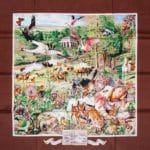
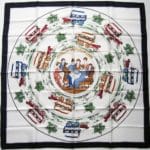
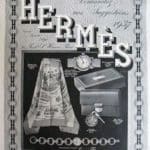

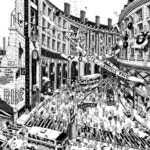
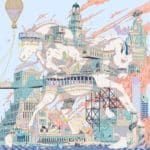
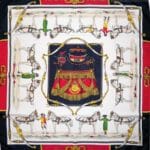
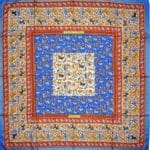

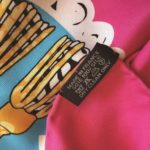


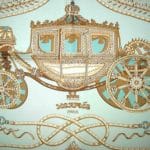
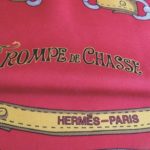



Related posts: